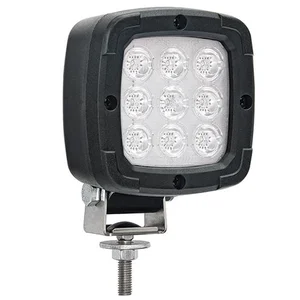The transport of dangerous goods is regulated by ADR. Within the ADR the 1000-point regulation is particularly important. This regulation stipulates, among other things, when a safety advisor must be called in when transporting dangerous goods. But what exactly is the 1000-point regulation?
What is this points system?
The 1000-point system is a way to determine how risky it is to transport certain substances. If your score falls between 900-999 points, it means there are few hazardous items in the overall cargo. In this case, partial exemptions from the rules apply. A score of less than 1000 means that all goods, without exception, must fully comply with the law!
The construction of the 1000 points scheme ADR
The 1000-point system is detailed in Section 1.1.3.6 of the ADR. It is used to determine when a safety advisor must be hired for road transport. The following requirements must be met:
- There are at least three cargo units carrying dangerous goods on board; and At least two of these units contain explosives; or
- There are at least four units carrying dangerous goods on board and at least three of these units contain radioactive material; or
- There are at least five units of dangerous goods on board and at least four of these units contain flammable liquids or solids; or
- There are at least six units of dangerous goods on board and at least five of these units contain toxic substances; or
- At least eight cargo units containing dangerous goods are on board and at least six of these units contain corrosive substances.

Division of the 1,000-point scheme into transport categories
Those who want to transport dangerous substances must comply with the ADR regulations for road transport. Within the ADR, the so-called 1000-point system is particularly important. This system determines, among other things, when a safety advisor must be engaged for road transport.
The 1000 points scheme has five transport categories:
Transport categories
| Vervoerscategorie 0: Verboden te vervoeren volgens de 1000 punten regeling |
| Transport category 1: 50 points per kilo or litre |
| Transport category of 2: 3 points per kilo or litre |
| Transport category 3: 1 point per kilo or litre |
| Vervoerscategorie 4: Onbeperkt te vervoeren volgens de 1000 punten regeling |
When transporting hazardous materials by road, it's essential to understand the various transport categories. Additionally, knowledge of the point system is crucial, as it determines how these substances are classified. Transport Category 0 refers to fully exempted substances. Transport Category 4 is defined as activities for which there are absolutely no restrictions or rules. Between these two extremes, you'll find Transport Categories 1-3. These categories encompass a range of hazardous materials subject to different levels of limitation and regulation.
To determine which requirements apply to a particular shipment, the number of points for each substance must be calculated based on factors such as the quantity being transported, the type of substance, and other relevant considerations. For example, if a consignment contains multiple transport categories, the total points must be added up. This is done to determine whether they fall within the limits set by partial exemptions according to ADR regulations. Ultimately, having a thorough understanding of the requirements for transport categories is crucial to ensure safe and compliant transport of hazardous materials.
Exemption from ADR requirements, what does it look like?
As a professional driver, it's important to be aware of various exemptions from the standard requirements for transporting hazardous materials. One of these exemptions is known as the 1000-point rule, which allows certain drivers to bypass certain ADR regulations. These regulations include, among others, displaying orange placards on the vehicle, having a written instruction card in the vehicle, and the driver holding an ADR certificate. Additionally, certain types of vehicles can be exempt from Hazmat regulations, which are typically applicable when driving through tunnels or transporting passengers on board. In general, it's essential for commercial drivers to understand these exemptions, ensuring safe and legal transport of hazardous materials.
What is HAZMAT?
"HAZMAT" is a commonly used acronym in the fields of science and technology. The term stands for "Hazardous Materials," which means "gevaarlijke stoffen" in Dutch. It refers to all substances or materials that can pose a danger to health, safety, or the environment when mishandled. Hazmats are typically categorized based on their physical characteristics and chemical composition. In certain situations, they require special handling or attention. Due to their potentially hazardous nature, trained professionals often need to carefully manage or dispose of hazardous materials.
ADR-certified lighting
For illuminated truck traffic carrying hazardous materials, it is essential that the correct certifications are present. That's why many companies opt for vehicle lighting that is ADR certified. ADR certification indicates that these lamps meet stringent quality standards.


